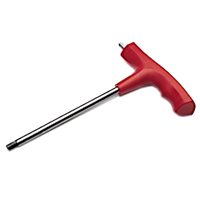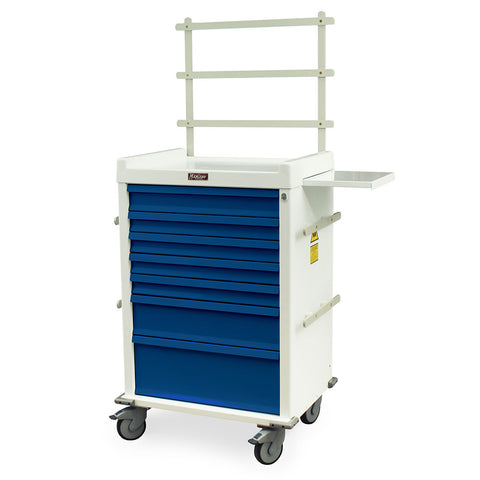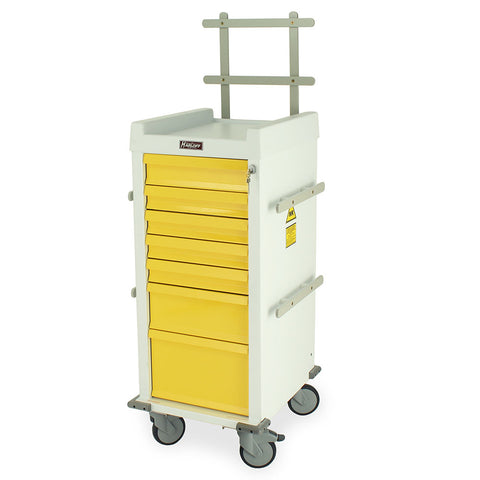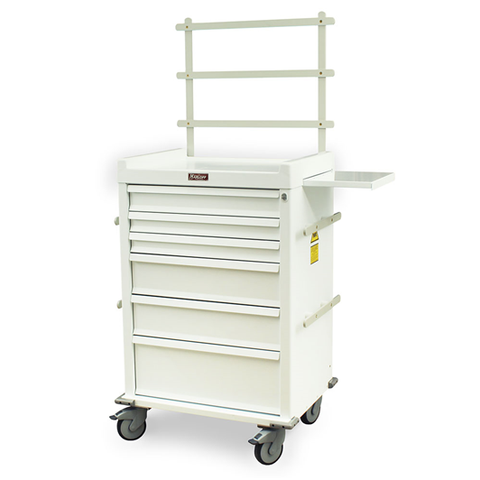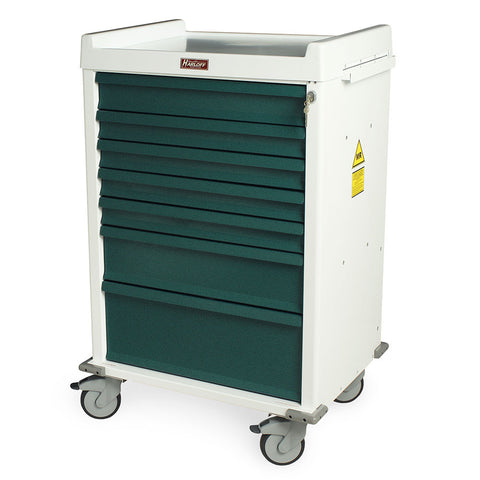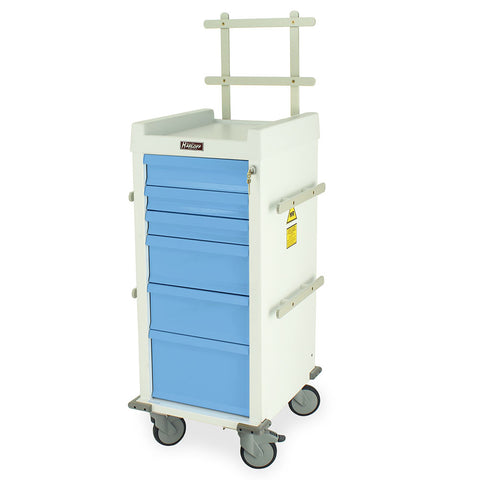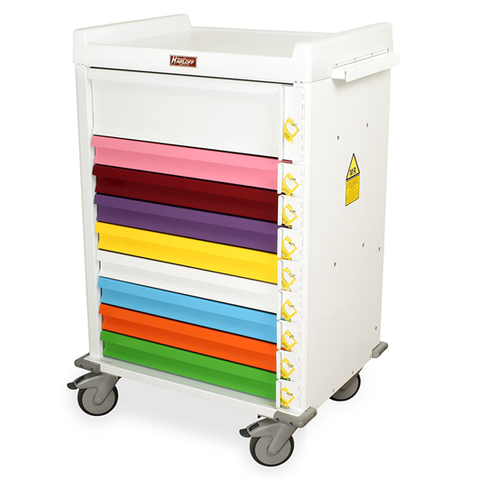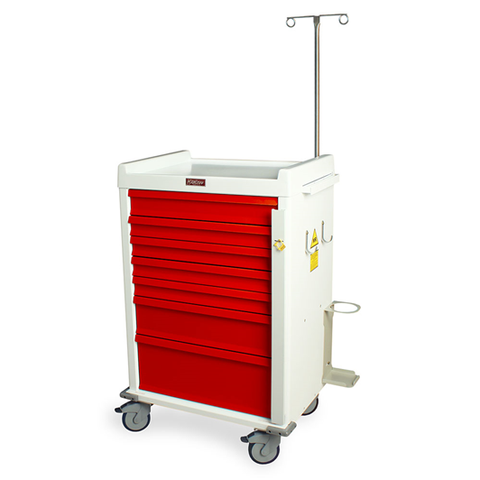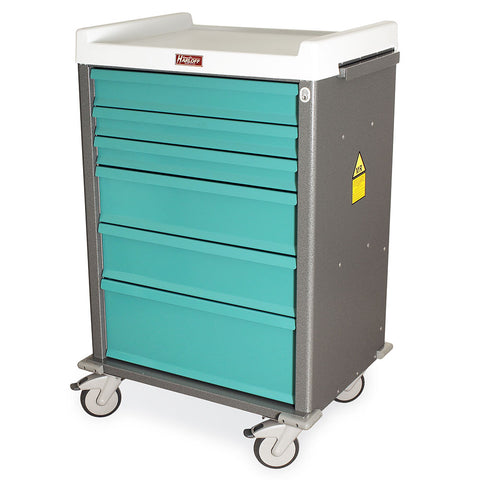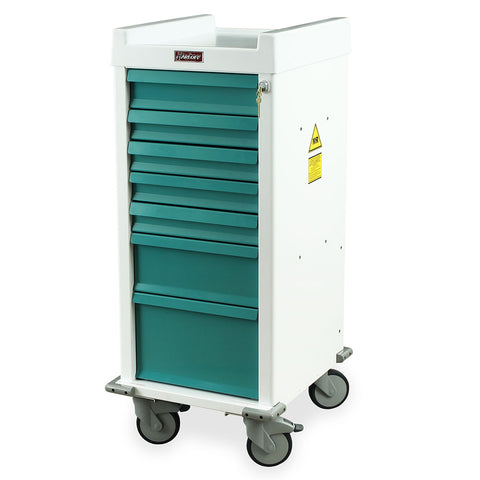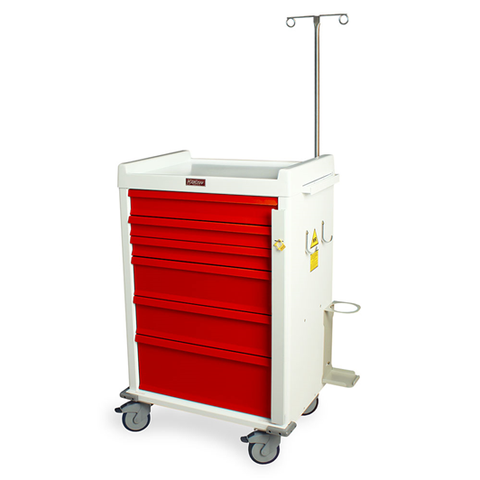In the world of Magnetic Resonance Imaging (MRI), safety is paramount. One of the most effective ways to ensure safety is through proper labeling of equipment and areas. Understanding the meaning behind MRI labels, their color codes, and symbols is crucial for healthcare professionals working in MRI environments. This guide will delve into the essentials of MRI labels, focusing on their significance, regulatory standards, and best practices for implementation.
Introduction to MRI Labels
MRI labels are more than just stickers; they are vital tools that communicate safety information within and around MRI suites. Clear and accurate labeling helps prevent accidents, ensures compliance with safety standards, and promotes efficient workflow in healthcare facilities.
Importance of Clear MRI Labeling for Patient, Staff, and Equipment Safety
Proper labeling serves as a first line of defense against potential hazards in MRI environments. For instance, the use of MRI Labels ensures that non-MRI-safe equipment is easily identifiable, reducing the risk of introducing ferromagnetic objects into the MRI suite.
How ASTM F2503 Labeling Prevents Accidents in MRI Suites
The ASTM F2503 standard provides guidelines for labeling equipment and materials used in MRI environments. Adhering to this standard helps in categorizing items as MR Safe, MR Conditional, or MR Unsafe, thereby preventing accidents related to magnetic interference or projectile hazards.
For a comprehensive understanding of MRI safety signs and their meanings, refer to our Complete Guide to MRI Safety Signs: What They Mean and Why They Matter.
The Basics of MRI Labeling
Understanding the fundamentals of MRI labeling is essential for maintaining a safe MRI environment. This section covers the necessity of MRI labels and the regulatory standards that govern them.
Why MRI Labels Are Essential
MRI labels are essential for:
- Preventing Projectile Accidents: Clearly labeling equipment as MR Unsafe helps prevent ferromagnetic objects from being brought into the MRI suite, reducing the risk of projectile accidents.
- Avoiding Implant Malfunctions: Proper labeling ensures that MR Conditional devices are used within their specified limits, preventing potential malfunctions.
- Reducing RF Heating: Labels indicating the MR Safe status of equipment help in managing radiofrequency (RF) heating, ensuring patient safety during scans.
- Communicating Safety at a Glance: Color-coded labels provide immediate visual cues to staff, facilitating quick identification of equipment status.
Regulatory Standards for MRI Labels
Adhering to regulatory standards is crucial for MRI safety:
- ASTM F2503: This standard defines the terminology and requirements for labeling items in MRI environments. It categorizes items as MR Safe, MR Conditional, or MR Unsafe based on their magnetic properties.
- ACR Recommendations: The American College of Radiology provides guidelines on MRI safety, including recommendations for labeling and signage to enhance safety protocols.
For a deeper dive into MRI warning labels and their importance, explore our ASTM MRI Safety Labels: What You Need to Know for Compliance.
Understanding MRI Color Codes
Color coding is a visual system used to quickly convey the safety status of equipment in MRI environments. This section explains the significance of each color code.
Green: MR Safe
Green labels indicate that an item is MR Safe, meaning it poses no known hazards in any MRI environment. For example, the ASTM Labels MR Safe 25-Pack is designed for accurate equipment marking, ensuring compliance with safety standards.
Yellow: MR Conditional
Yellow labels signify that an item is MR Conditional, meaning it is safe under specific conditions. The MR-Conditional Six Drawer Emergency Cart is an example of equipment that meets ASTM F2503 standards for MR Conditional items.
Red: MR Unsafe
Red labels denote that an item is MR Unsafe, indicating that it poses hazards in all MRI environments. The MRI Labels, 12 pack, red are designed to distinctly mark non-MRI-safe equipment, preventing hazardous confusion in critical scenarios.
Symbols and Icons on MRI Labels
Symbols and icons enhance the clarity of MRI labels, providing additional information at a glance.

Standardized ASTM F2503 Symbols
The ASTM F2503 standard defines specific symbols to represent the safety status of items. These include:
-
Green Square: Represents MR Safe items.

- Yellow Triangle: Represents MR Conditional item

-
Red Circle with Slash: Represents MR Unsafe items.

These standardized symbols ensure consistency and quick recognition across MRI environments.
Equip Your Team with Tools They Can Trust
Get high-quality, MRI-dedicated equipment that supports safer scans, better positioning, and smoother patient care.
View Trusted ProductsAdditional Safety Symbols
In addition to the standard symbols, other icons may be used to convey specific safety information, such as:
- Directional Arrows: Indicate the orientation or placement of equipment.
- Warning Exclamation Marks: Highlight potential hazards or special instructions.
These additional symbols complement the standard labels, providing comprehensive safety information.
Placement of MRI Labels for Maximum Safety
Proper placement of MRI labels is crucial for ensuring safety and compliance.
Device and Equipment Labeling
All equipment entering Zone IV (scanner room) should be first tested, and then labeled appropriately. For instance, the MR-Conditional Seven Drawer Anesthesia Cart is designed for safe use in MRI suites and is labeled accordingly to indicate its MR Conditional status.
Door and Zone Labels
Labels should be placed at each MRI zone transition (Zones I–IV) to clearly demarcate areas with varying magnetic field strengths.
For more information on MRI labels, refer to our ASTM MRI Safety Labels: What You Need to Know for Compliance.
Patient-Facing Labels
Patient-facing labels should be placed on screening sheets, prep rooms, and patient information sheets to inform patients and staff of any MRI-related considerations.
Common Labeling Mistakes to Avoid
Avoiding common labeling mistakes is essential for maintaining a safe MRI environment.
- Using Outdated Terminology: Terms like "MR Compatible" are outdated. Instead, use the standardized classifications of MR Safe, MR Conditional, and MR Unsafe.
- Failing to Specify MR Conditional Parameters: MR Conditional items should have specific conditions listed to ensure safe use.
- Poor Visibility or Placement: Labels should be placed in visible locations and be easy to read to ensure quick identification.
Choosing MRI Labels for Your Facility
Selecting the right MRI labels is crucial for safety and compliance.
Standard vs. Unique MRI Labels
- Standard Labels: Suitable for most equipment and zones, standard labels are readily available and easy to implement.
- Unique Labels: Designed for specialized devices, bilingual requirements, or facility-specific instructions, these labels provide flexibility to meet specific needs.
Durable Materials for High-Magnetic Environments
MRI labels should be made from durable materials that can withstand the demanding MRI environment. Materials like laminated vinyl, rigid plastic, or aluminum are ideal for long-lasting performance.
Conclusion: Make MRI Labels Clear and Compliant
Ensuring that MRI labels are clear, compliant, and properly placed is essential for maintaining a safe MRI environment. Regular audits and updates to labeling practices can help prevent accidents and ensure compliance with safety standards.
To enhance safety and organization in your facility, consider upgrading to MRI Med’s ASTM F2503-compliant labels. Explore our range of MRI Safety Labels to find the right solutions for your needs.
FAQs
1. What do MRI color codes mean?
MRI color codes indicate the safety status of equipment:
-
Green: MR Safe – poses no known hazards in any MRI environment.
-
Yellow: MR Conditional – safe under specific conditions.
-
Red: MR Unsafe – poses hazards in all MRI environments.
2. What’s the difference between MR Safe, MR Conditional, and MR Unsafe labels?
- MR Safe: Items that pose no known hazards in any MRI environment.
- MR Conditional: Items safe under specific MRI conditions (field strength, SAR, configuration).
- MR Unsafe: Items that pose hazards in all MRI environments.
3. Where should MRI labels be placed?
MRI labels should be placed on equipment entering the MRI suite, at each MRI zone transition, and on patient-facing documents to ensure clear communication of safety information.
4. Can I order a variety of MRI labels?
Yes! MRI Med offers a 50-pack of MRI labels that includes both MR Safe and MR Unsafe options for general use on devices or to indicate facility-specific instructions. This pack provides a convenient labeling solution for all your MRI safety needs.
5. How often should MRI labels be updated?
MRI labels should be reviewed and updated regularly, especially when equipment changes occur or when new safety standards are introduced, to ensure ongoing compliance and safety.
